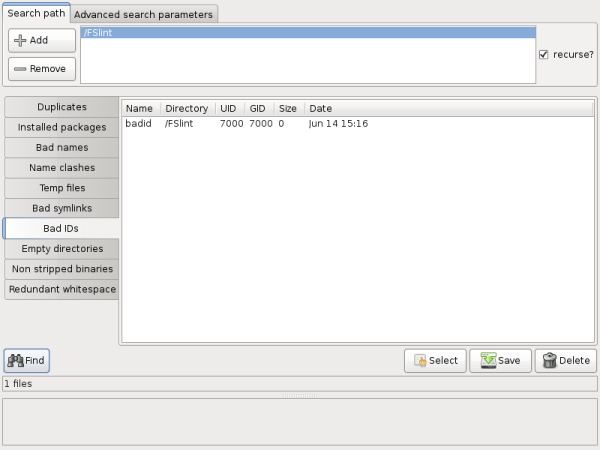Bad ID's
Every user is assigned an id number on a Linux system. When a user moves files between multiple computers, a file will occasionally end up with an user id that the current system can not map (or associate) to that user. For the desktop user, these can be annoying as access to these files may be denied if they fail to update the user id. The most common forms of bad id's on a desktop stem from changing Linux distributions or extracting a compressed file created by another user on another system. For the server administrators, bad ids's could be a sign that you may have a rogue process or worse, an intruder.
Graphical Interface

In this example. FSlint correctly identifies a file with a bad id on this system because no user id nor group id of 7000 exists.
Note: There is a bug which does not allow the graphical interface for bad id's to function properly even though the command line functions as expected. This has been fixed in FSlint >=2.42 released on 2010-04-29. However, since the main repositories for several only have 2.26 the user will have to manually update FSlint or use the command line tools.
Command Line Interface
The command line interface to this utility is 'findid'. This utility will be found in the installation directory of fslint.
$ /usr/share/fslint/fslint/findid --help find unused or bad file ids Usage: findid [[-r] [-f] paths(s) ...] If no path(s) specified then the current directory is assumed.





